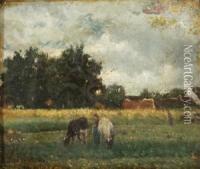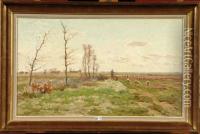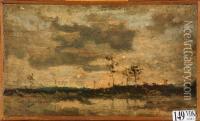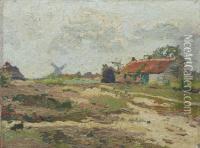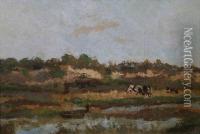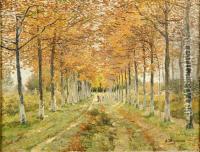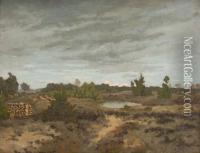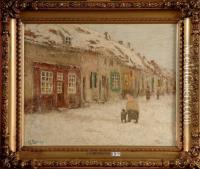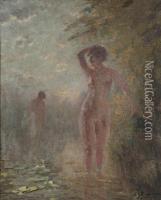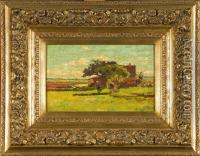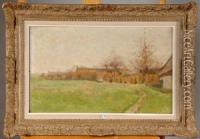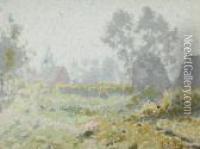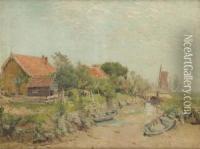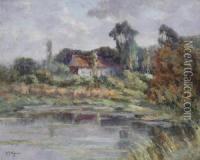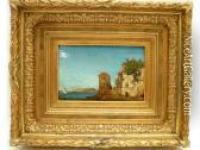Adrien Joseph Heymans Paintings
Adrien Joseph Heymans was a Belgian painter whose work played a significant role in the development of Impressionism and Luminism within the context of Belgian art. Born on March 30, 1839, in Antwerp, Belgium, Heymans grew up in an environment that was conducive to his artistic development. He was initially influenced by the Barbizon school, a group of French painters who emphasized naturalism and the portrayal of rural life. However, Heymans' style evolved significantly over the course of his career, as he began to experiment with light and color, ultimately becoming a pioneer of Luminism in Belgium.
Heymans' early works were characterized by a detailed realism and a focus on the effects of light on the landscape, a theme that would remain central to his oeuvre. He traveled extensively throughout Europe, drawing inspiration from various sources and refining his technique. His experiences in France, particularly his exposure to the Impressionist movement, had a profound impact on his style. Heymans adopted a looser brushwork and a brighter palette, focusing increasingly on the interplay of light and color in his depictions of the Belgian countryside.
In the late 19th and early 20th centuries, Heymans became a leading figure in Belgian Impressionism and Luminism. His works were celebrated for their poetic and atmospheric qualities, often capturing the subtle changes of light and atmosphere with a remarkable sensitivity. Heymans was particularly adept at depicting water, and many of his most famous paintings feature rivers, lakes, and the sea, rendered with a luminous quality that gives them a timeless appeal.
Throughout his career, Heymans exhibited his work widely, both in Belgium and internationally, gaining recognition and accolades. He was a member of various artistic societies, including Les XX, a group of artists who sought to promote avant-garde art in Belgium. Despite the changes in artistic trends over the years, Heymans remained committed to exploring the nuances of light and color, and his work continued to evolve until his death on February 10, 1921, in Wechelderzande, Belgium.
Heymans' legacy is that of a pioneering artist who bridged the gap between realism and impressionism, contributing significantly to the development of modern art in Belgium. His exploration of light and color has earned him a place among the foremost Belgian painters of his time, and his works continue to be admired for their beauty and technical mastery.
